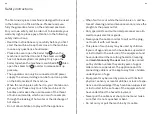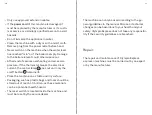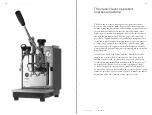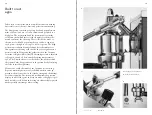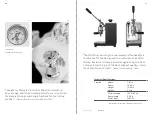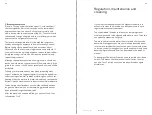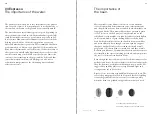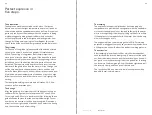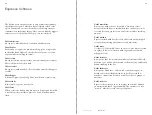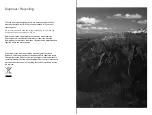
35
34
Owner’s book •
03 Espresso
A bitter tasting espresso with an intense taste and not much
aroma plus an extreme aftertaste is normally the outcome of a
too intensely brewed espresso grind.
Judging the
result.
If you have followed the instructions, the result is a perfect
espresso. You can judge this by the following criteria:
The first impression
The color of the crema shows the caramelized natural sugars
of the espresso bean. Ideally, the crema should be of a hazel
color with shimmers of red irregular stripes (fig. 01). The crema
should be three to four millimeters thick. It should not include
any big bubbles and last a minimum of three minutes without
breaking up or decomposing.
If the crema is light, thin, contains big bubbles and disappears
quickly, it is a sign of insufficient use of the espresso grind
(fig. 02). If the crema is dark brown or black with a white spot,
or it is too thin with the tendency to form a black hole in the
middle, the espresso grind has been exhausted (fig. 03).
The aroma
The espresso flavor consists of many different substances. Af-
ter the extraction of the shot(s), the aroma should be intense
but pleasant and slightly sweet. The espresso should not be
burned or taste wooden, smell musky or like tobacco.
A touch of hazelnut can develop when a blend with a high
Arabica percentage is used. An unclear, weak or lack of smell
is a sign of poor use of the espresso. A biting, sour taste or too
dominant smell means the espresso has been exhausted.
The taste
A perfect espresso needs no sugar, however, but sugar can
complete it. The taste of the espresso should be perfectly ba-
lanced between sweet and bitter. It should never taste burnt
or leave a bitter aftertaste. A watery tasting espresso without
the needed density is normally due to badly brewed espresso.
01
03
02
01 Perfect crema
02 Light and thin crema
03 dark brown crema with black
hole in the middle


